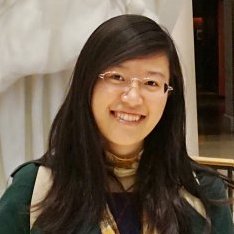Overview
GLB 2023 is the third edition of the Workshop of the Graph Learning Benchmarks, encouraged by the success of the previous editions. Inspired by the conference tracks in the computer vision and natural language processing communities that are dedicated to establishing new benchmark datasets and tasks, we call for contributions that establish novel ML tasks on novel graph-structured data which have the potential to (i) increase the diversity of graph learning benchmarks, (ii) identify new demands of graph machine learning in general, and (iii) gain a better synergy of how concrete techniques perform on these benchmarks. We also welcome contributions on data-centric graph learning, such as novel approaches to collect, annotate, clean, augment, and sythesize graph-structured data.
GLB 2023 will be a non-archival workshop; we are excited to host this edition in person in conjunction with KDD 2023. Please click here for KDD 2023 registration.
Our previous call for papers can be found here.
Schedule
We have a full-day program from 8am to 5pm on Sunday (Aug. 6) at Grand Ballroom B.
| Time (PDT) | Agenda |
|---|---|
| 8:00-8:10am | Opening remarks |
| 8:10-8:50am | Keynote by Yizhou Sun (40 min): Graph Neural Networks: Trends and Open Problems |
| 8:50-9:30am | Keynote by Da Zheng (40 min): Graph machine learning for industry applications with DGL and GraphStorm |
| 9:30-10:00am | Coffee Break |
| 10:00-10:40am | Keynote by Xavier Bresson (40 min): A Generalization of Visual Transformers and MLP-Mixer to Graphs |
| 10:40-11:30am | Contributed Talks - Session 1 (50 min) (Presentation Time) - A critical look at the evaluation of GNNs under heterophily: Are we really making progress? (Outstanding Paper) - Examining the Effects of Degree Distribution and Homophily in Graph Learning Models - Impact-Oriented Contextual Scholar Profiling using Self-Citation Graphs - An Out-of-the-Box Application for Reproducible Graph Collaborative Filtering extending the Elliot Framework |
| 11:30-1:00pm | Lunch Break (90 min) |
| 1:00-1:40pm | Keynote by Atlas Wang (40 min): Unveiling the simplicity in Training Graph Neural Networks |
| 1:40-2:20pm | Keynote by Jimeng Sun (40 min): Data, Benchmark and Models to Enable AI in Healthcare |
| 2:20-3:00pm | Contributed Talks - Session 2 (40 min) (Presentation Time) - Graph Generative Model for Benchmarking Graph Neural Networks (Outstanding Paper) - TpuGraphs: A Performance Prediction Dataset on Large Tensor Computational Graphs - NeuroGraph: Benchmarks for Graph Machine Learning in Brain Connectomics |
| 3:00-3:30pm | Coffee Break (30 min) |
| 3:30-4:30pm | Panel Discussion (60 min) Moderator:Jingrui He Panelists: Michael Galkin, Neil Shah, Yujun Yan |
| 4:30-4:50pm | Contributed Talks - Session 3 (20 min) (Presentation Time) - A Metadata-Driven Approach to Understand Graph Neural Networks - Web-Scale Academic Name Disambiguation: the WhoIsWho Benchmark, Leaderboard, and Toolkit |
| 4:50-5:00pm | Closing Remarks |
Click here to view the detailed schedule in Google Sheets.
Keynote Speakers
Yizhou Sun
University of California, Los Angeles
A Graph Benchmark Dataset for Hardware Design Automation
Da Zheng
Amazon
Graph machine learning for industry applications with DGL and GraphStorm
Xavier Bresson
National University of Singapore
A Generalization of Visual Transformers and MLP-Mixer to Graphs
Atlas Wang
The University of Texas at Austin
Unveiling the simplicity in Training Graph Neural Networks
Jimeng Sun
University of Illinois, Urbana-Champaign
Data, Benchmark and Models to Enable AI in Healthcare
Panelists
Michael Galkin
Intel Labs
Neil Shah
Snap Research
Yujun Yan
Dartmouth College
Accepted Papers
- Impact-Oriented Contextual Scholar Profiling using Self-Citation Graphs
Yuankai Luo (Beihang University); Fengli Xiao (Beihang University); Lei Shi (Beihang University)AbstractAbstract: Quantitatively profiling a scholar's scientific impact is important to modern research society. Current practices with bibliometric indicators (e.g., h-index), lists, and networks perform well at scholar ranking, but do not provide structured context for scholar-centric, analytical tasks such as profile reasoning and understanding. This work presents GeneticFlow (GF), a suite of novel graph-based scholar profiles that fulfill three essential requirements: structured-context, scholar-centric, and evolution-rich. We propose a framework to compute GF over large-scale academic data sources with millions of scholars. The framework encompasses a new unsupervised advisor-advisee detection algorithm, a well-engineered citation type classifier using interpretable features, and a fine-tuned graph neural network (GNN) model. Evaluations are conducted on the real-world task of scientific award inference. Experiment outcomes show that the F1 score of best GF profile significantly outperforms alternative methods of impact indicators and bibliometric networks in all the 6 computer science fields considered. Moreover, the core GF profiles, with 63.6%~66.5% nodes and 12.5%~29.9% edges of the full profile, still significantly outrun existing methods in 5 out of 6 fields studied. Visualization of GF profiling result also reveals human explainable patterns for high-impact scholars.PDF Code & Datasets - A critical look at the evaluation of GNNs under heterophily: Are we really making progress?
Oleg Platonov (Yandex Research); Denis Kuznedelev (Yandex); Michael Diskin (Yandex); Artem Babenko (Yandex); Liudmila Prokhorenkova (Yandex)AbstractAbstract: Node classification is a classical graph machine learning task on which Graph Neural Networks (GNNs) have recently achieved strong results. However, it is often believed that standard GNNs only work well for homophilous graphs, i.e., graphs where edges tend to connect nodes of the same class. Graphs without this property are called heterophilous, and it is typically assumed that specialized methods are required to achieve strong performance on such graphs. In this work, we challenge this assumption. First, we show that the standard datasets used for evaluating heterophily-specific models have serious drawbacks, making results obtained by using them unreliable. The most significant of these drawbacks is the presence of a large number of duplicate nodes in the datasets Squirrel and Chameleon, which leads to train-test data leakage. We show that removing duplicate nodes strongly affects GNN performance on these datasets. Then, we propose a set of heterophilous graphs of varying properties that we believe can serve as a better benchmark for evaluating the performance of GNNs under heterophily. We show that standard GNNs achieve strong results on these heterophilous graphs, almost always outperforming specialized models. Our datasets and the code for reproducing our experiments are available at https://github.com/yandex-research/heterophilous-graphsPDF Code & Datasets - An Out-of-the-Box Application for Reproducible Graph Collaborative Filtering extending the Elliot Framework
Daniele Malitesta (Polytechnic University of Bari); Claudio Pomo (Polytechnic University of Bari); Vito Walter Anelli (Polytechnic University of Bari); Tommaso Di Noia (Politecnico di Bari); Antonio Ferrara (Politecnico di Bari)AbstractAbstract: Graph convolutional networks (GCNs) are taking over collaborative filtering-based recommendation. Their message-passing schema effectively distills the collaborative signal throughout the user-item graph by propagating informative content from neighbor to ego nodes. In this demonstration, we show how to run complete experimental pipelines with six state-of-the-art graph recommendation models in Elliot (i.e., our framework for recommender system evaluation). We seek to highlight four main features, namely: (i) we support reproducibility in PyTorch Geometric (i.e., the library we use to implement the baselines); (ii) reproduced graph models span across various GCN families; (iii) we prepare a Docker image to provide a self-consistent ecosystem for the running of experiments. Codes, datasets, and a video tutorial to install and launch the application are accessible at: https://github.com/sisinflab/Graph-Demo.PDF Code - Examining the Effects of Degree Distribution and Homophily in Graph Learning Models
Mustafa Yasir (University of Warwick); John Palowitch (Google); Anton Tsitsulin (Google); Long Tran-Thanh (University of Warwick); Bryan Perozzi (Google Research)AbstractAbstract: Despite a surge in interest in GNN development, homogeneity in benchmarking datasets still presents a fundamental issue to GNN research. GraphWorld is a recent solution which uses the Stochastic Block Model (SBM) to generate diverse populations of synthetic graphs for benchmarking any GNN task. Despite its success, the SBM imposed fundamental limitations on the kinds of graph structure GraphWorld could create. In this work we examine how two additional synthetic graph generators can improve GraphWorld's evaluation; LFR, a well-established model in the graph clustering literature and CABAM, a recent adaptation of the Barabasi-Albert model tailored for GNN benchmarking. By integrating these generators, we significantly expand the coverage of graph space within the GraphWorld framework while preserving key graph properties observed in real-world networks. To demonstrate their effectiveness, we generate 300,000 graphs to benchmark 11 GNN models on a node classification task. We find GNN performance variations in response to homophily, degree distribution and feature signal. Based on these findings, we classify models by their sensitivity to the new generators under these properties. Additionally, we release the extensions made to GraphWorld on the GitHub repository, offering further evaluation of GNN performance on new graphs.PDF Code & Datasets - Web-Scale Academic Name Disambiguation: the WhoIsWho Benchmark, Leaderboard, and Toolkit
Bo Chen (Tsinghua University); Jing Zhang (Renmin University of China); Fanjin Zhang (Tsinghua University); Tianyi Han (Zhipu.AI); Yuqing Cheng (Zhipu.AI); Xinyan Li (Zhipu.AI); Yuxiao Dong (Tsinghua); Jie Tang (Tsinghua University)AbstractAbstract: Name disambiguation -- a fundamental problem in online academic systems -- is now facing greater challenges with the increasing growth of research papers. For example, on AMiner, an online academic search platform, about 10% of names own more than 100 authors. Such real-world challenging cases have not been effectively addressed by existing researches due to the small-scale or low-quality datasets that they have used. The development of effective algorithms is further hampered by a variety of tasks and evaluation protocols designed on top of diverse datasets. To this end, we present WhoIsWho owning, a large-scale benchmark with over 1,000,000 papers built using an interactive annotation process, a regular leaderboard with comprehensive tasks, and an easy-to-use toolkit encapsulating the entire pipeline as well as the most powerful features and baseline models for tackling the tasks. Our developed strong baseline has already been deployed online in the AMiner system to enable daily arXiv paper assignments. The public leaderboard is available at http://whoiswho.biendata.xyz/. The toolkit is at https://github.com/THUDM/WhoIsWho. The online demo of daily arXiv paper assignments is at https://na-demo.aminer.cn/arxivpaper.PDF Code & Datasets - NeuroGraph: Benchmarks for Graph Machine Learning in Brain Connectomics
Anwar Said (Vanderbilt University); Roza G Bayrak (Vanderbilt University); Tyler Derr (Vanderbilt University); Mudassir Shabbir (Vanderbilt Universtiy); Daniel C Moyer (Vanderbilt University); Catie Chang (Vanderbilt University); Xenofon Koutsoukos (Vanderbilt University)AbstractAbstract: Machine learning provides a valuable tool for analyzing high-dimensional functional neuroimaging data, and is proving effective in predicting various neurological conditions, psychiatric disorders, and cognitive patterns. In functional Magnetic Resonance Imaging (MRI) research, interactions between brain regions are commonly modeled using graph-based representations. The potency of graph machine learning methods has been established across myriad domains, marking a transformative step in data interpretation and predictive modeling. Yet, despite their promise, the transposition of these techniques to the neuroimaging domain remains surprisingly under-explored due to the expansive preprocessing pipeline and large parameter search space for graph-based datasets construction. In this paper, we introduce NeuroGraph, a collection of graph-based neuroimaging datasets that span multiple categories of behavioral and cognitive traits. We delve deeply into the dataset generation search space by crafting 35 datasets within both static and dynamic contexts, running in excess of 15 baseline methods for benchmarking. Additionally, we provide generic frameworks for learning on dynamic as well as static graphs. Our extensive experiments lead to several key observations. Notably, using correlation vectors as node features, incorporating larger number of regions of interest, and employing sparser graphs lead to improved performance. To foster further advancements in graph-based data driven Neuroimaging, we offer a comprehensive open source Python package that includes the datasets, baseline implementations, model training, and standard evaluation. The package is publicly accessible at https://anwar-said.github.io/anwarsaid/neurograph.html.PDF Code & Datasets - TpuGraphs: A Performance Prediction Dataset on Large Tensor Computational Graphs
Phitchaya Mangpo Phothilimthana (Google Research); Sami A Abu-El-Haija (Google); Kaidi Cao (Stanford University); Bahare Fatemi (University of British Columbia); Charith Mendis (University of Illinois at Urbana-Champaign); Bryan Perozzi (Google Research)AbstractAbstract: Precise hardware performance models play a crucial role in code optimizations. They can assist compilers in making heuristic decisions or aid autotuners in identifying the optimal configuration for a given program. For example, the autotuner for XLA, a machine learning compiler, discovered 10-20% speedup on state-of-the-art models serving substantial production traffic at Google. Although there exist a few datasets for program performance prediction, they target small sub-programs such as basic blocks or kernels. This paper introduces TpuGraphs, a performance prediction dataset on full tensor programs, represented as computational graphs, running on Tensor Processing Units (TPUs). Each graph in the dataset represents the main computation of a machine learning workload, e.g., a training epoch or an inference step. Each data sample contains a computational graph, a compilation configuration, and the execution time of the graph when compiled with the configuration. The graphs in the dataset are collected from open-source machine learning programs, featuring popular model architectures (e.g., ResNet, EfficientNet, Mask R-CNN, and Transformer). TpuGraphs provides 25x more graphs than the largest graph property prediction dataset (with comparable graph sizes), and 770x larger graphs on average compared to existing performance prediction datasets on machine learning programs. This graph-level prediction task on large graphs introduces new challenges in learning, ranging from scalability, training efficiency, to model quality.PDF Code & Datasets - Graph Generative Model for Benchmarking Graph Neural Networks
Minji Yoon (Carnegie Mellon University); Yue Wu (None); John Palowitch (Google); Bryan Perozzi (Google Research); Ruslan Salakhutdinov (Carnegie Mellon University)AbstractAbstract: As the field of Graph Neural Networks (GNN) continues to grow, it experiences a corresponding increase in the need for large, real-world datasets to train and test new GNN models on challenging, realistic problems. Unfortunately, such graph datasets are often generated from online, highly privacy-restricted ecosystems, which makes research and development on these datasets hard, if not impossible. This greatly reduces the amount of benchmark graphs available to researchers, causing the field to rely only on a handful of publicly-available datasets. To address this problem, we introduce a novel graph generative model, Computation Graph Transformer (CGT) that learns and reproduces the distribution of real-world graphs in a privacy-controlled way. More specifically, CGT (1) generates effective benchmark graphs on which GNNs show similar task performance as on the source graphs, (2) scales to process large-scale graphs, (3) incorporates off-the-shelf privacy modules to guarantee end-user privacy of the generated graph. Extensive experiments across a vast body of graph generative models show that only our model can successfully generate privacy-controlled, synthetic substitutes of large-scale real-world graphs that can be effectively used to benchmark GNN models.PDF Code & Datasets - A Metadata-Driven Approach to Understand Graph Neural Networks
Ting Wei Li (University of Michigan); Qiaozhu Mei (University of Michigan); Jiaqi Ma (University of Illinois Urbana-Champaign)AbstractAbstract: Graph Neural Networks (GNNs) have achieved remarkable success in various applications, but their performance can be sensitive to specific data properties of the graph datasets they operate on. Current literature on understanding the limitations of GNNs has primarily employed a model-driven approach that leverages heuristics and domain knowledge from network science or graph theory to model the GNN behaviors, which is time-consuming and highly subjective. In this work, we propose a metadata-driven approach to analyze the sensitivity of GNNs to graph data properties, motivated by the increasing availability of graph learning benchmarks. We perform a multivariate sparse regression analysis on the metadata derived from benchmarking GNN performance across diverse datasets, yielding a set of salient data properties. To validate the effectiveness of our data-driven approach, we focus on one identified data property, the degree distribution, and investigate how this property influences GNN performance through theoretical analysis and controlled experiments. Our theoretical findings reveal that datasets with a more balanced degree distribution exhibit better linear separability of node representations, thus leading to better GNN performance. We also conduct controlled experiments using synthetic datasets with varying degree distributions, and the results align well with our theoretical findings. Collectively, both the theoretical analysis and controlled experiments verify that the proposed metadata-driven approach is effective in identifying critical data properties for GNNs.PDF Code & Datasets
Organizers
Please contact us through this email address if you have any questions.
A list of organizers can also be found here.
Program Committee
- Ayan Chatterjee (Northeastern University)
- Baixiang Huang (National University of Singapore)
- Brandon A Mayer (Google)
- Chen Shao (Karlsruhe Institute of Technology)
- Chenhui Deng (Cornell University)
- Delvin Ce Zhang (Singapore Management University)
- Dingsu Wang (University of Illinois at Urbana-Champaign)
- Dongjin Song (University of Connecticut)
- Dongkwan Kim (KAIST)
- Jian Kang (University of Rochester)
- Jiarui Lu (Mila)
- Johannes Gasteiger (Technical University of Munich)
- Leonardo F. R. Ribeiro (TU Darmstadt)
- Mehdi Azabou (Georgia Institute of Technology)
- Neil Shah (Snap Inc.)
- Oliver Kiss (Central European University)
- Rik Sarkar (The University of Edinburgh)
- Shuangjia Zheng (Sun Yat-sen University)
- Sungsoo Ahn (POSTECH)
- Wenqing Zheng (University of Texas at Austin)
- Xingjian Zhang (University of Michigan)







